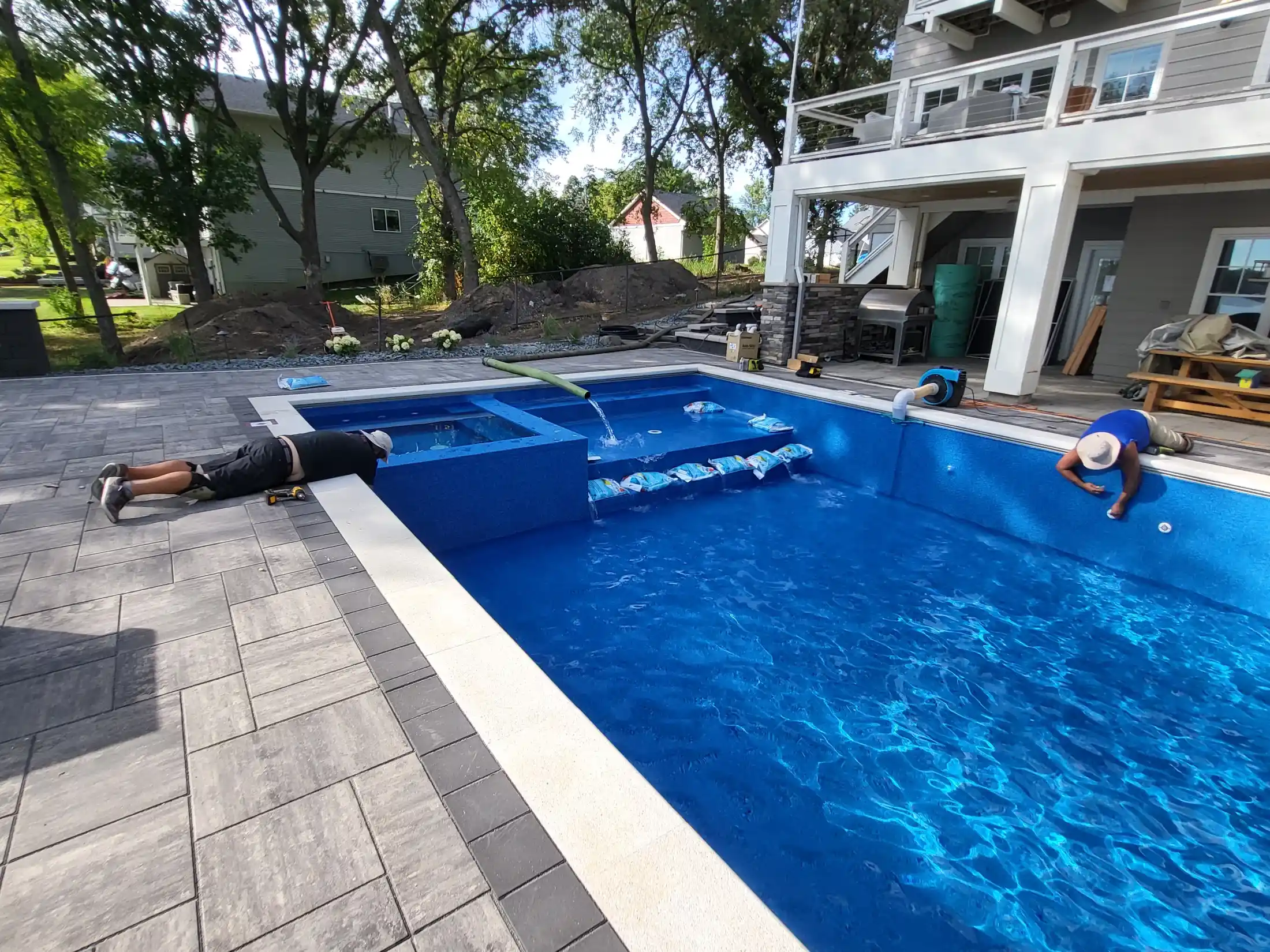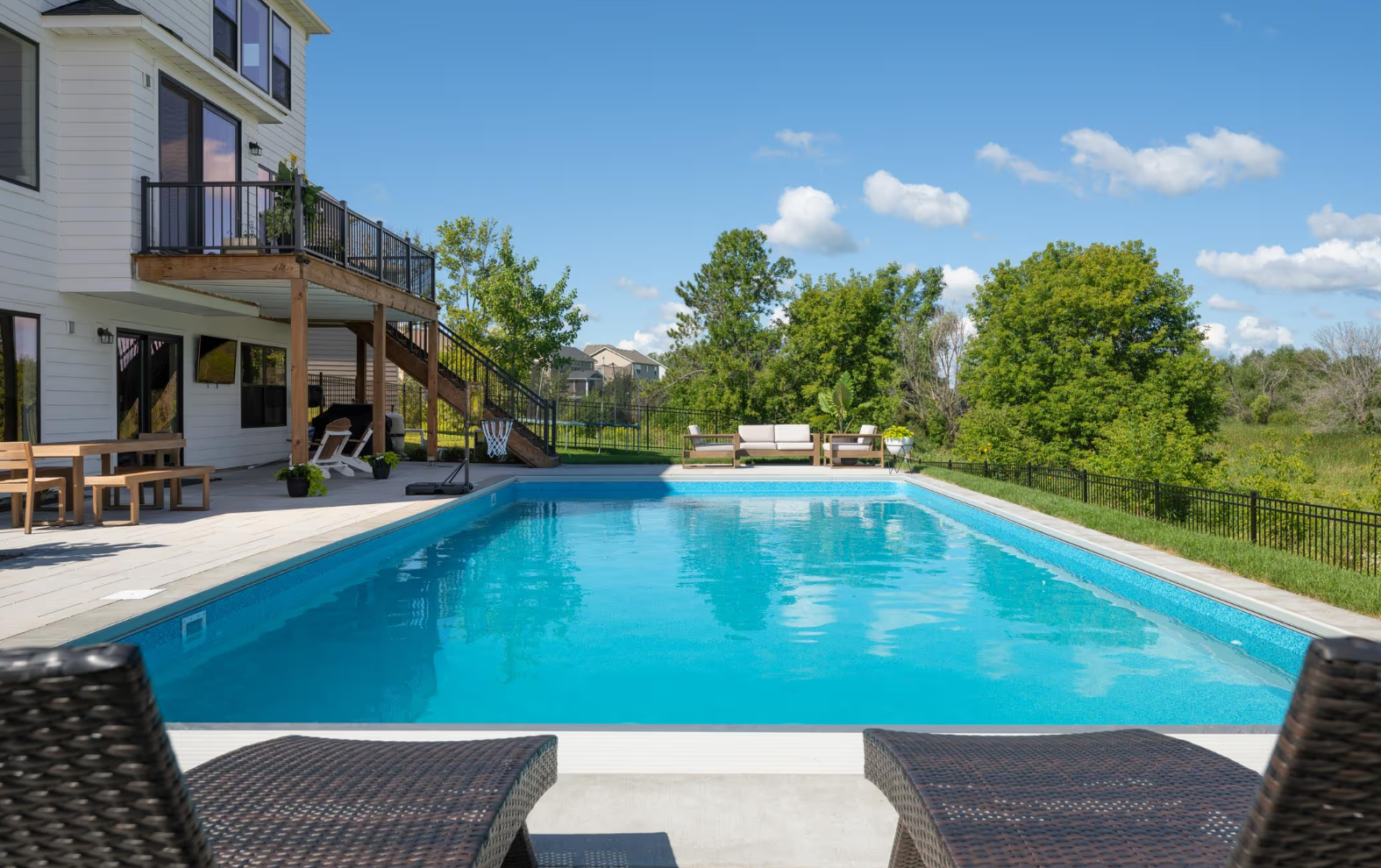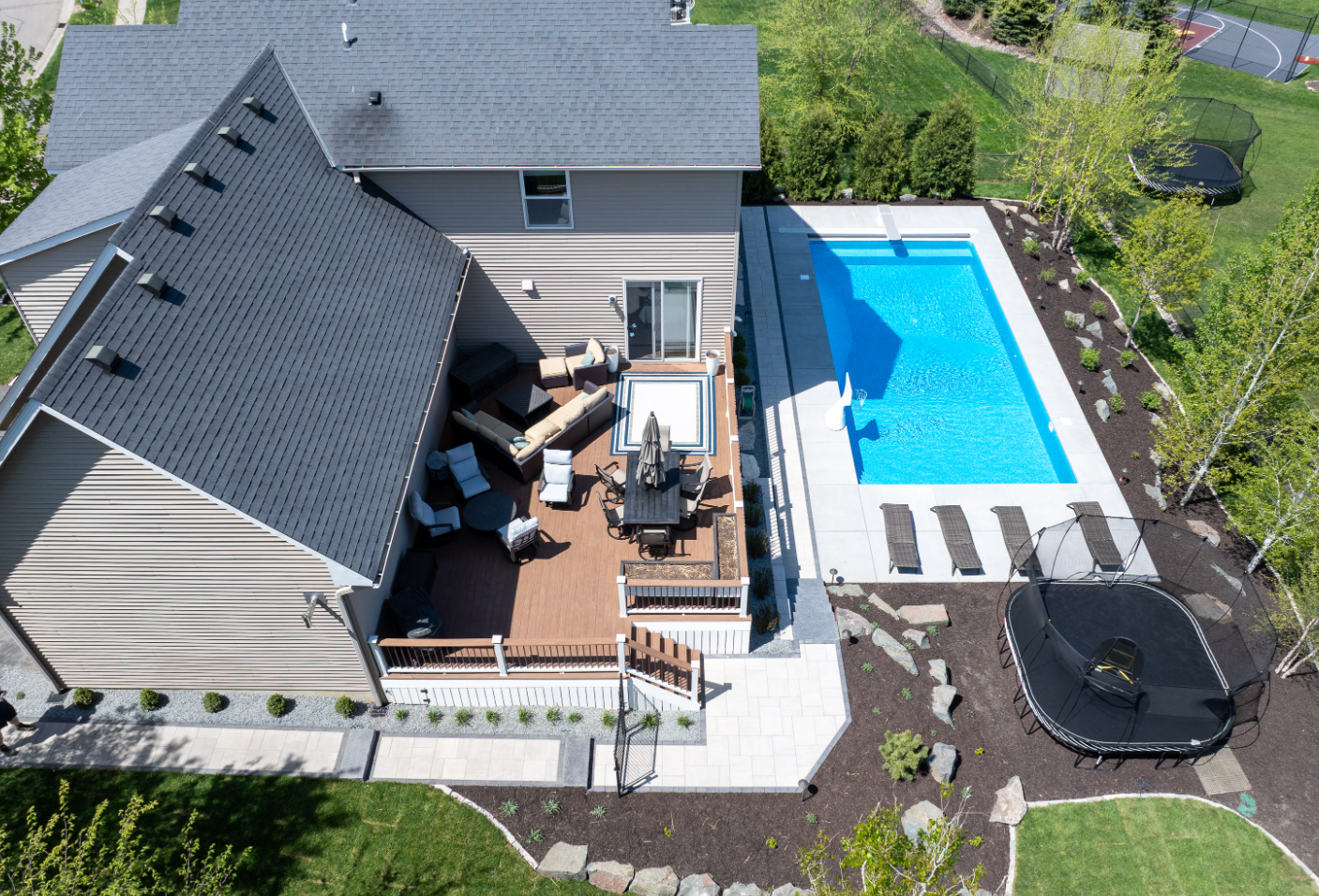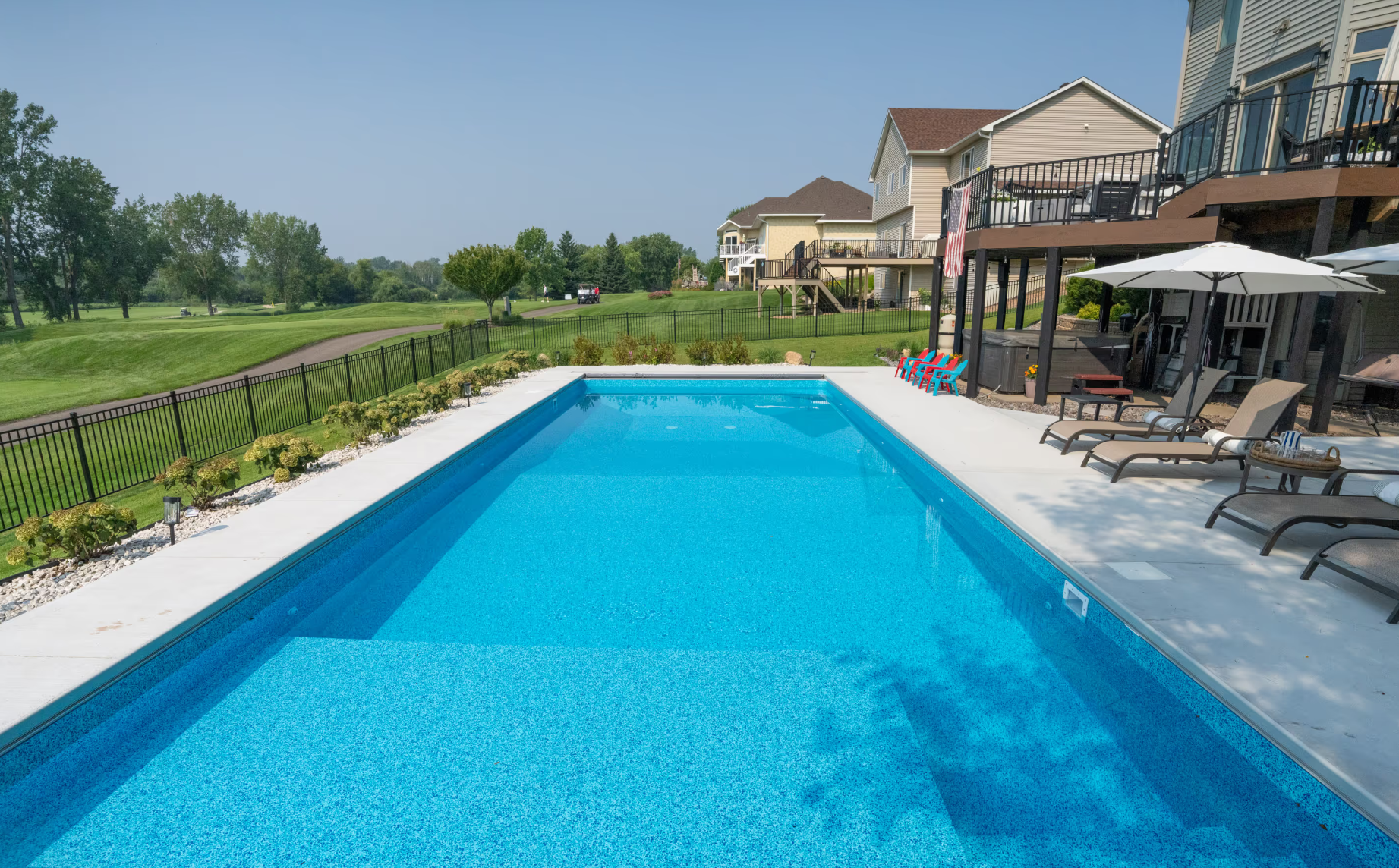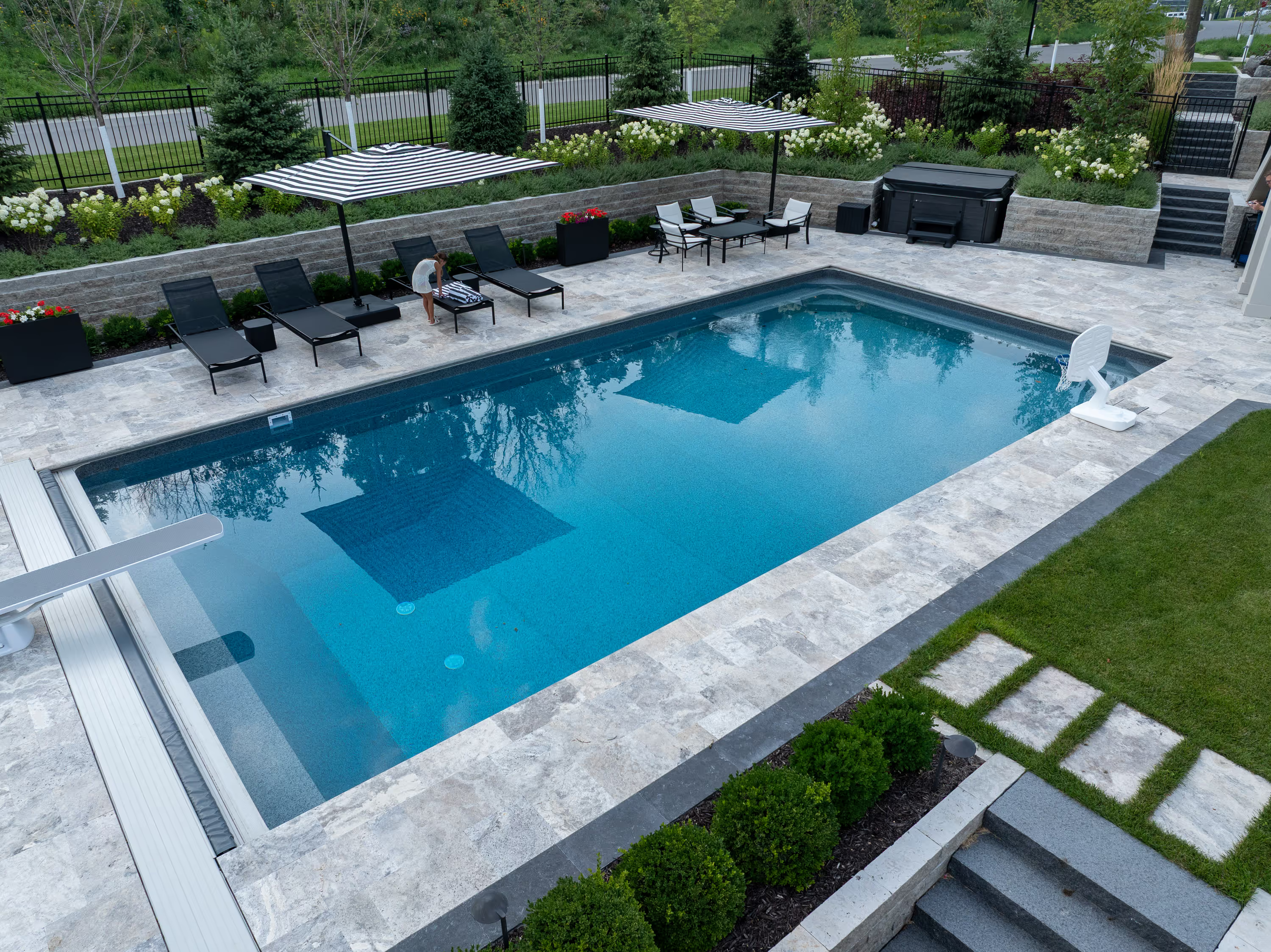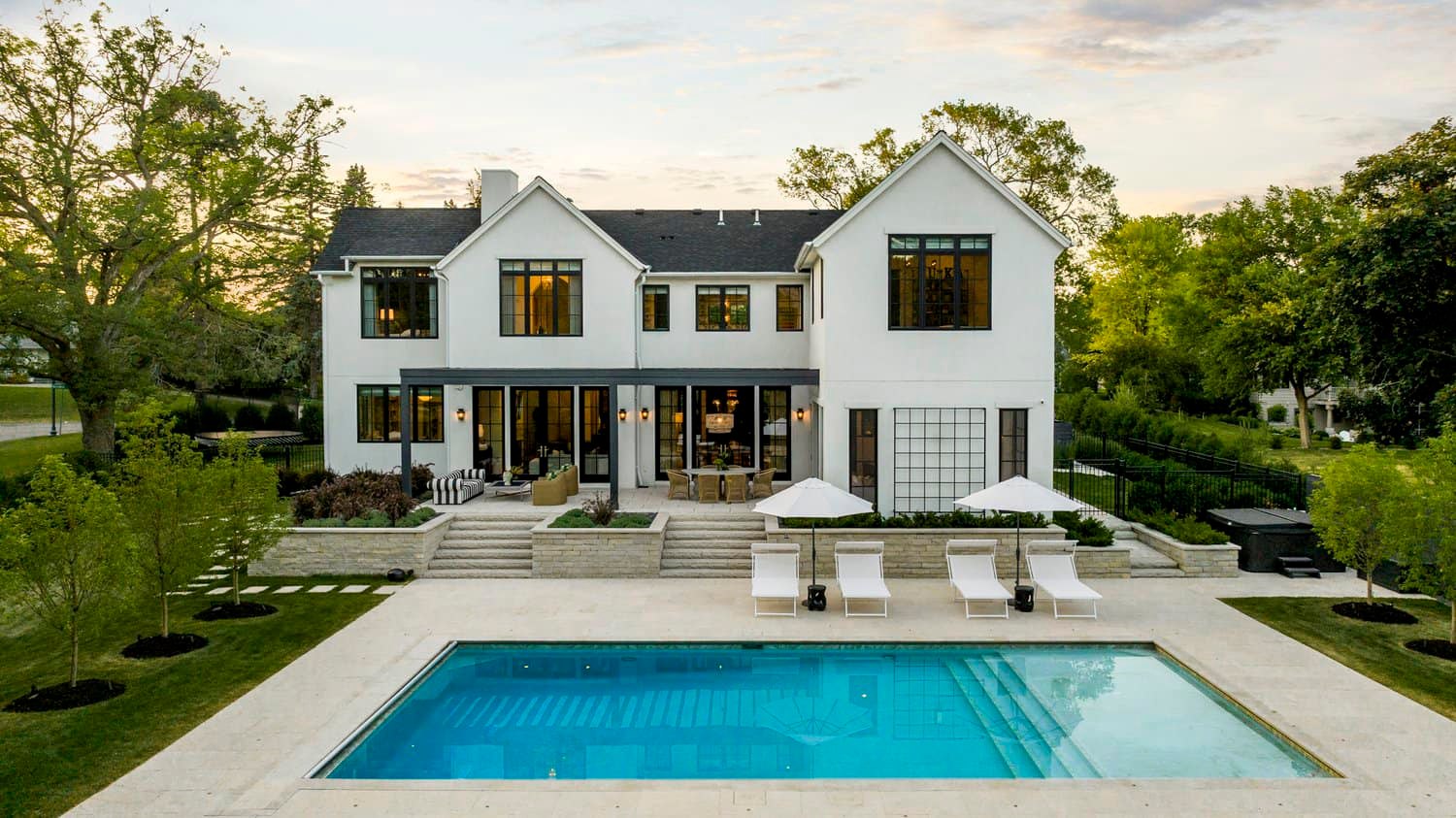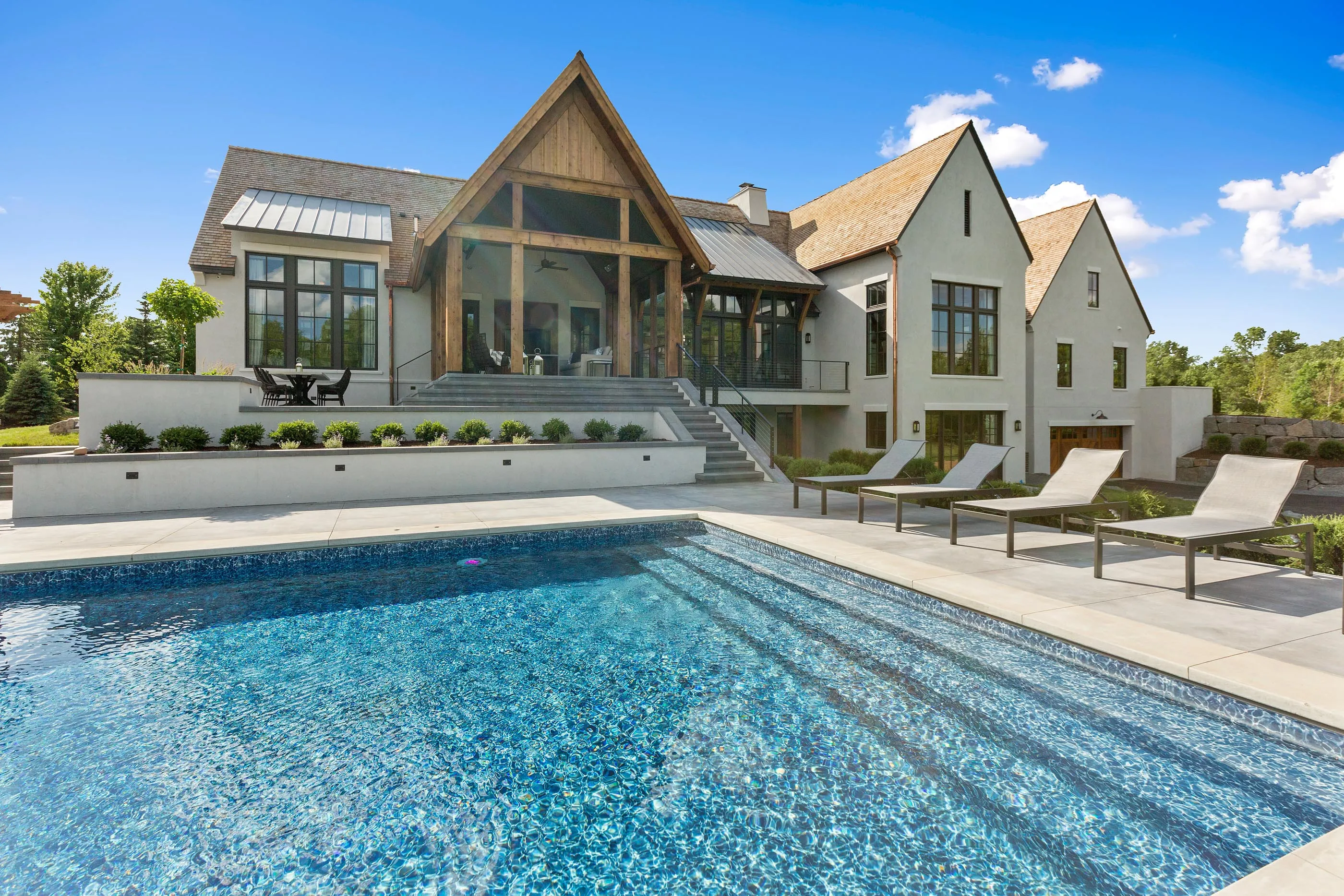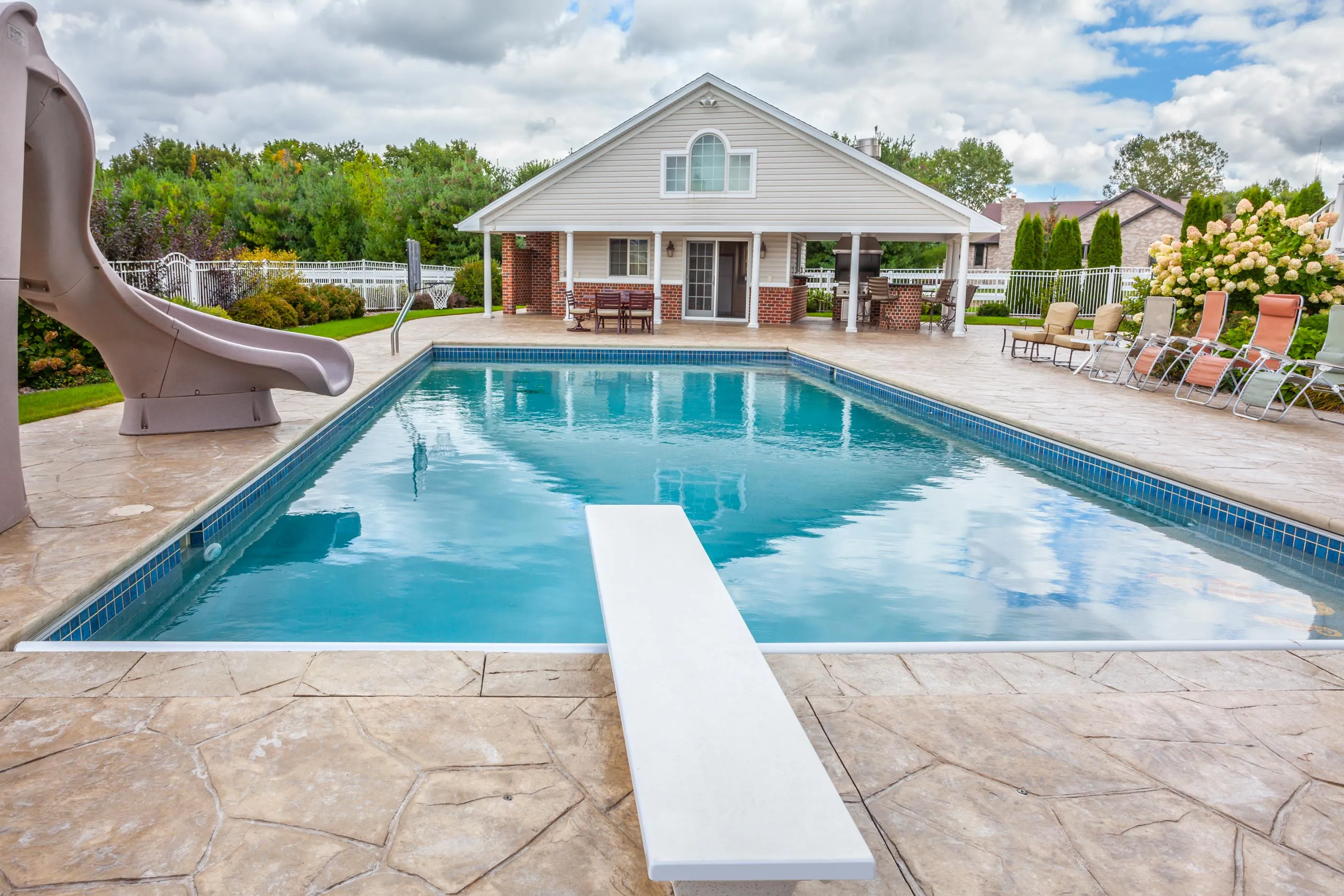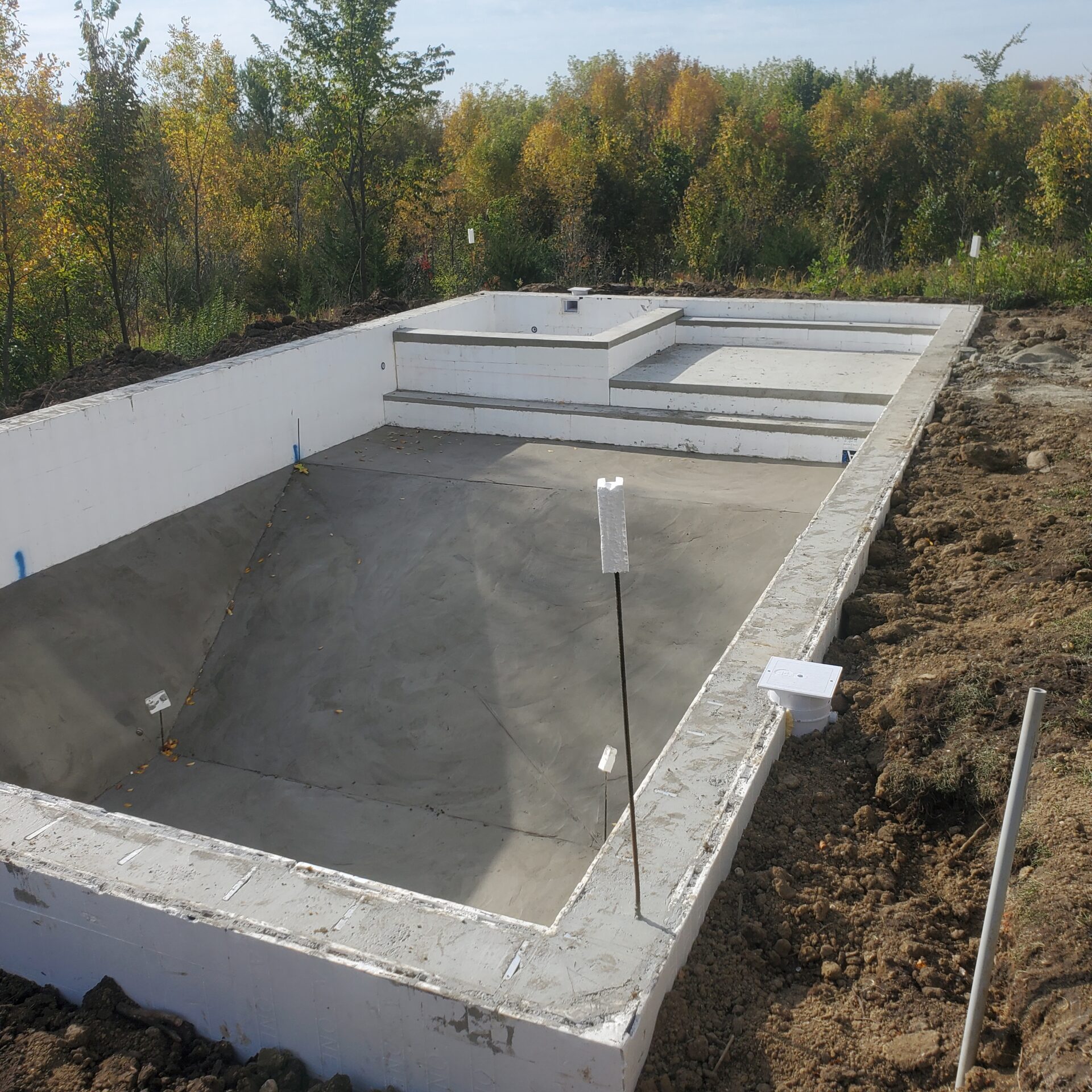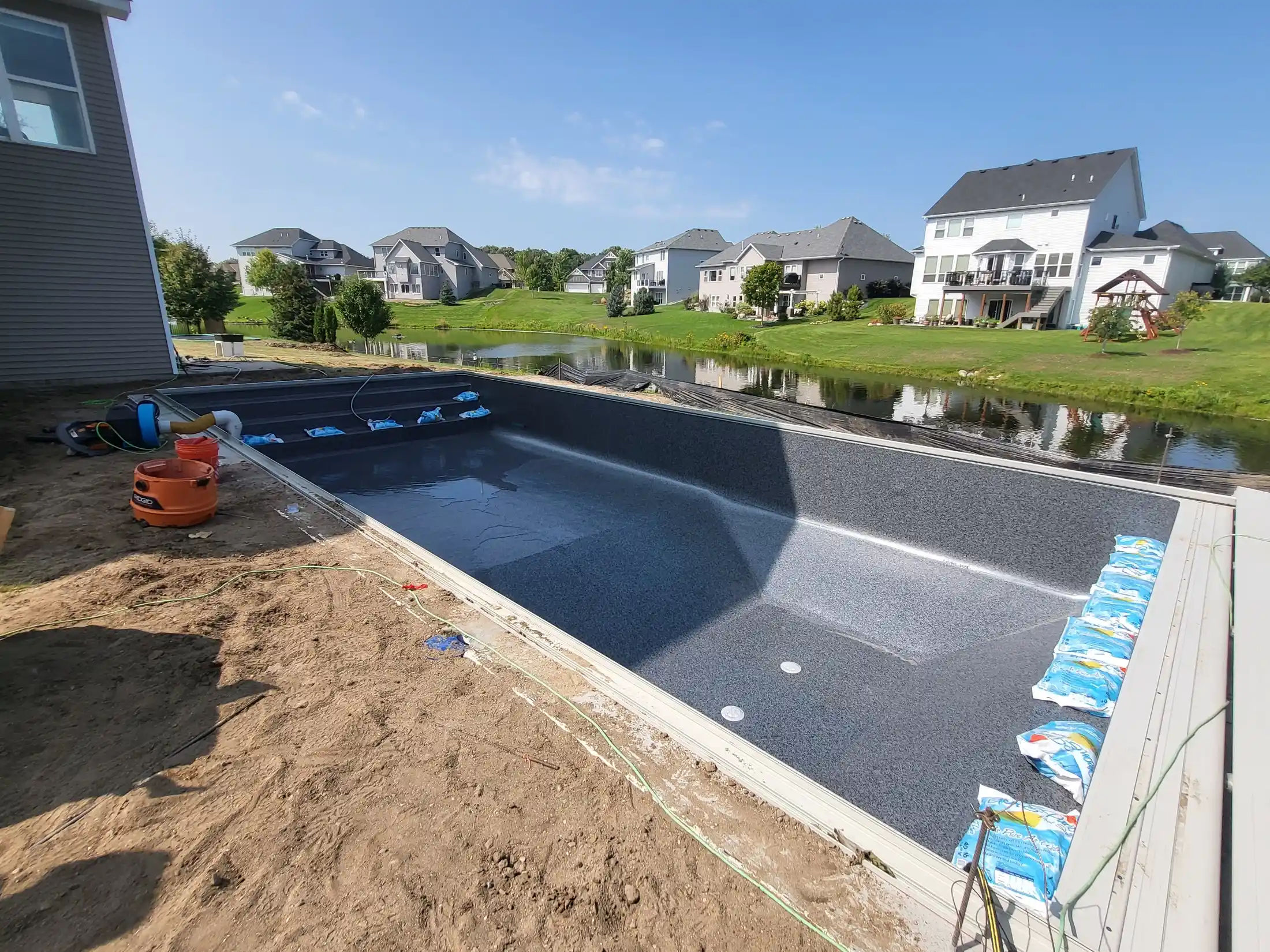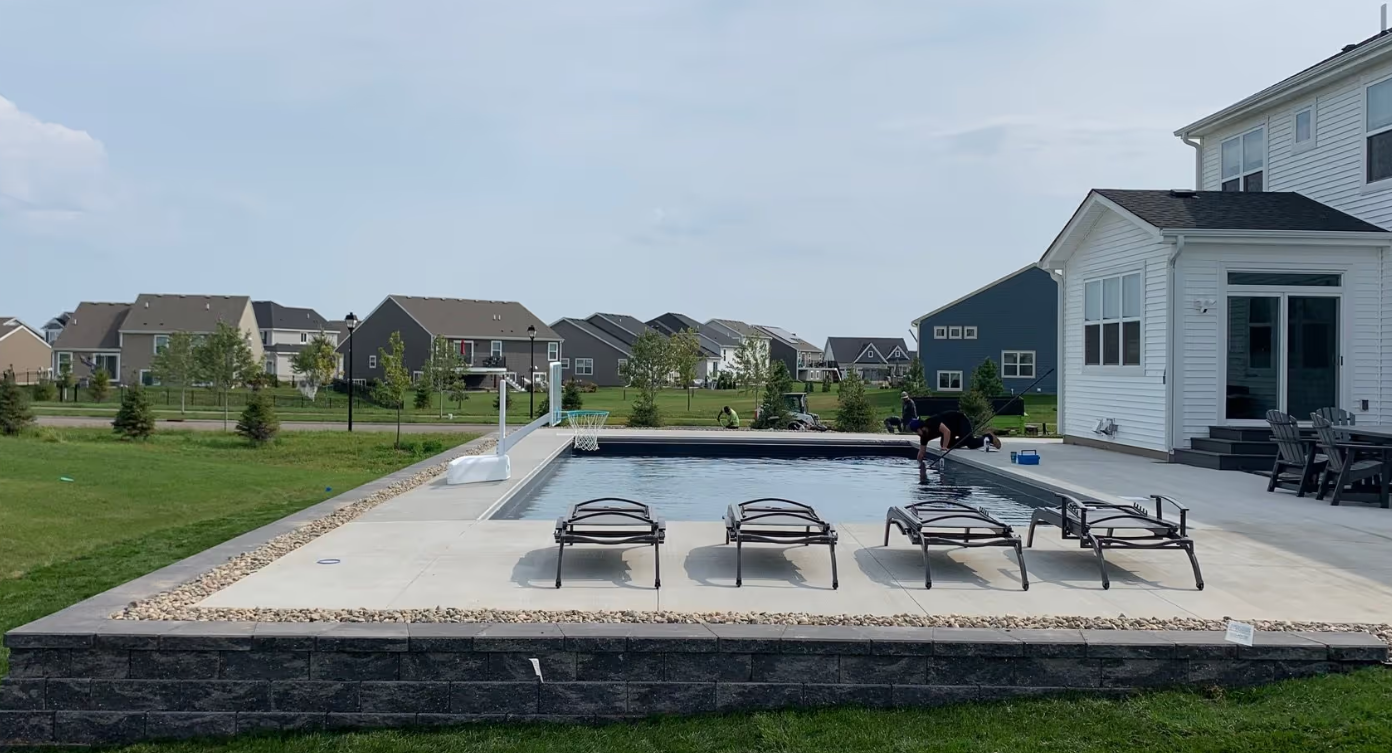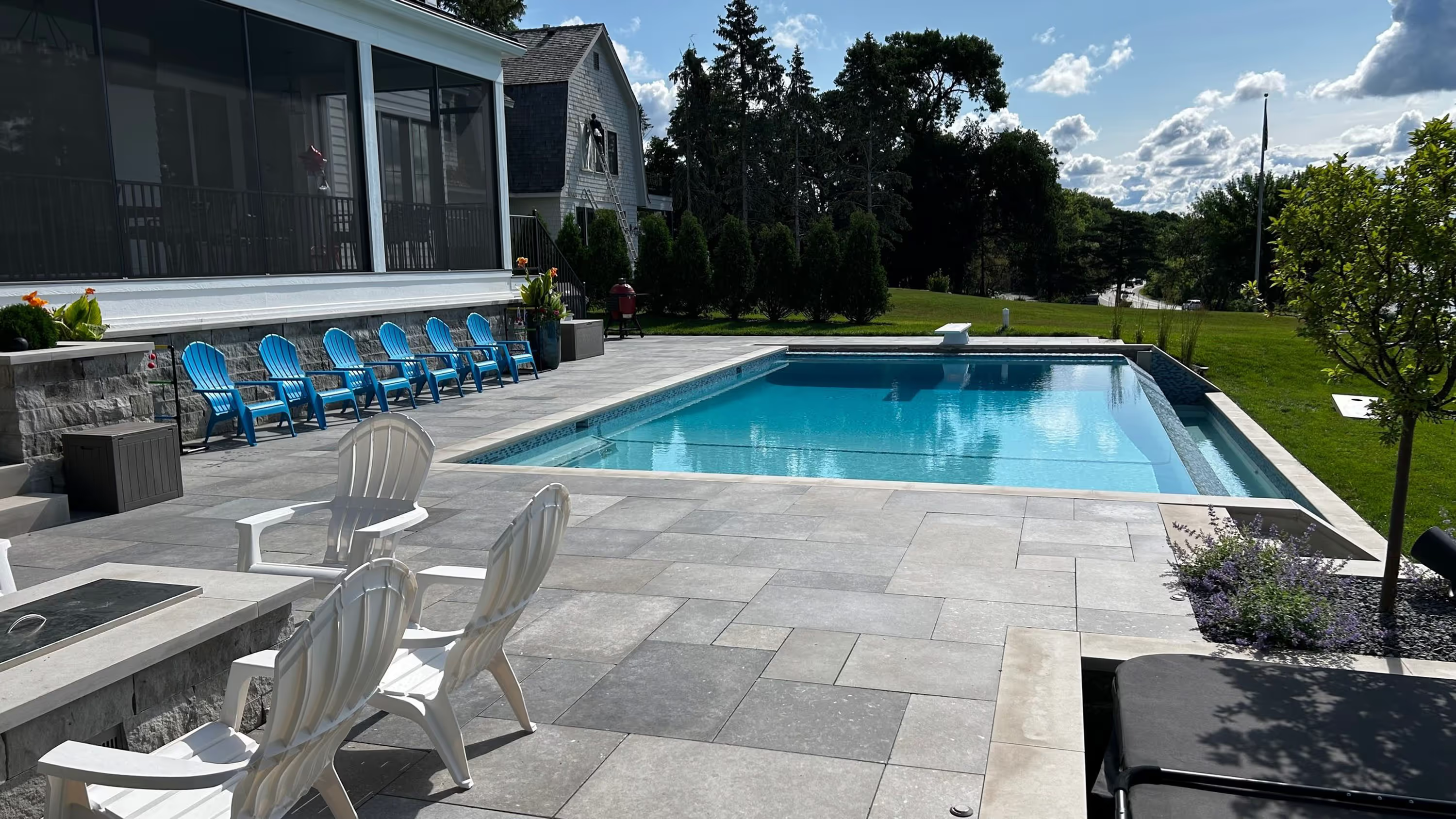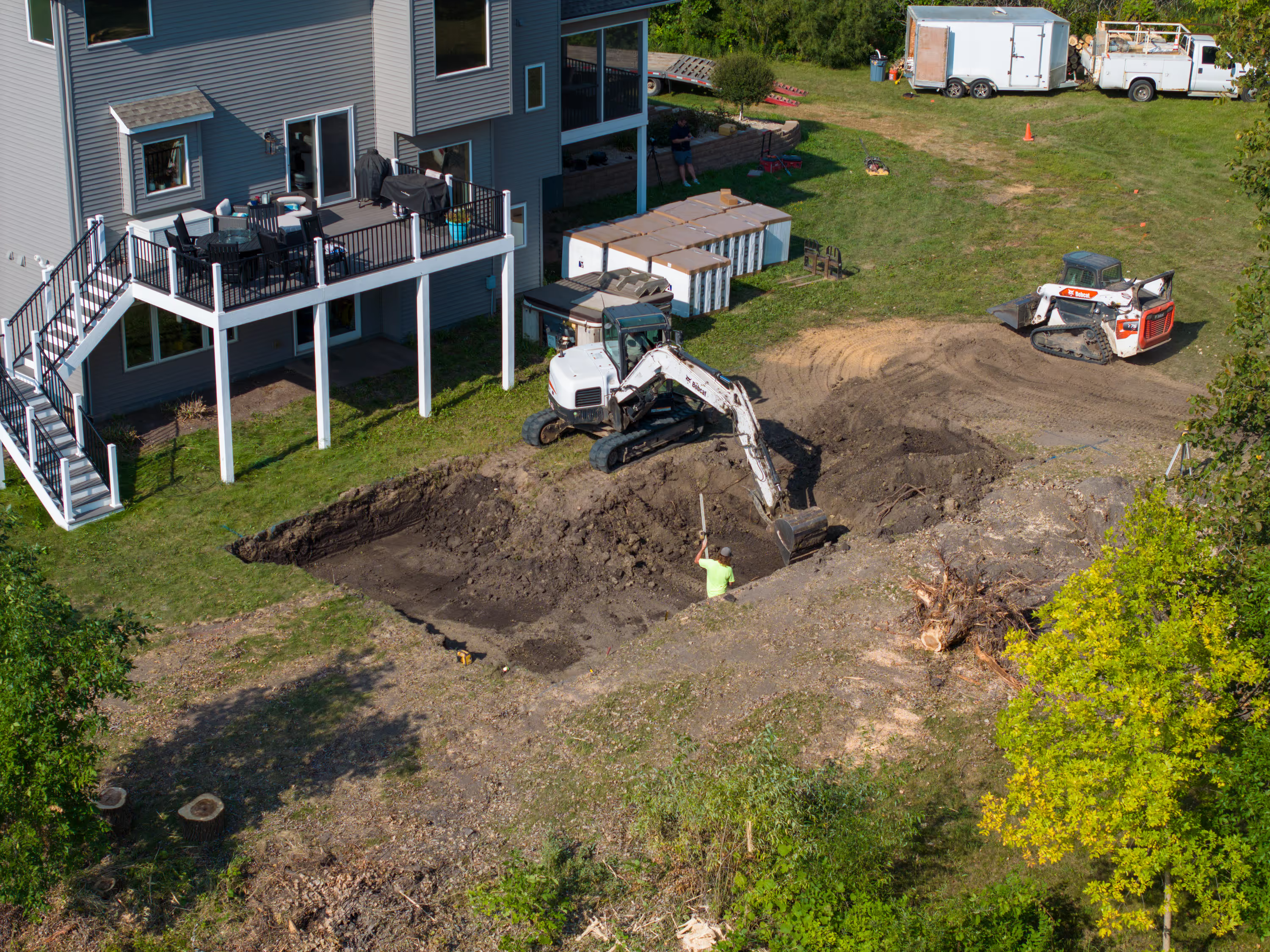Are you planning a swimming pool installation near Minneapolis and wondering about fencing requirements? Understanding pool safety laws is crucial for any homeowner considering an inground pool. At Plan Pools, we've navigated Minnesota's pool safety regulations for hundreds of installations throughout the Twin Cities, and we can guide you through exactly what's required.
If you're searching for pool contractors near you who understand local regulations and can help ensure your pool meets all safety requirements, you've found the right team. We created this comprehensive guide to help you understand Minnesota's pool fencing laws and how to ensure your installation is fully compliant from day one.
Ready to learn everything you need to know about pool fencing requirements in Minnesota? Let's dive into the complete legal requirements and safety considerations for your backyard pool project.
Minnesota Pool Fencing Laws: The Complete Overview
Minnesota follows specific state guidelines for pool safety barriers, with additional local ordinances that may apply depending on your municipality. Understanding these requirements is essential before beginning your pool installation.
Minnesota State Pool Barrier Requirements
Who Must Comply: All residential swimming pools with water depths exceeding 24 inches must have safety barriers that comply with Minnesota state regulations.
Basic Requirements:
- Barrier Height: Minimum 48 inches (4 feet) high
- Barrier Design: Must prevent climbing and restrict access to the pool area
- Gate Requirements: Self-closing and self-latching mechanisms required
- Gap Restrictions: Specific limitations on openings in and under barriers
Local Municipality Variations
While Minnesota provides statewide guidelines, individual cities and counties may have additional requirements:
Common Local Variations:
- Increased height requirements (some areas require 5 or 6-foot fencing)
- Specific material restrictions or preferences
- Additional gate hardware requirements
- Setback requirements from property lines
- Pool cover regulations as alternative safety measures
Detailed Minnesota Pool Barrier Specifications
Height and Construction Requirements
Minimum Height Standards:
- 48 inches minimum for all pool barriers
- Some municipalities require 60-72 inches - check local codes
- Height measured from grade on the side away from the pool
Construction Specifications:
- No gaps larger than 4 inches anywhere in the barrier
- Vertical members spaced no more than 4 inches apart
- No horizontal rails or design elements that could facilitate climbing
- Solid construction capable of withstanding normal use and weather
Gate Requirements and Safety Features
Self-Closing Mechanisms:
- All gates must close automatically from any open position
- Closing speed requirements - typically 10-30 seconds from open to latch
- Must function properly in all weather conditions
Self-Latching Hardware:
- Automatic latching required when gate closes
- Latch height requirements - typically 54 inches minimum from ground
- Release mechanism must be on pool side of gate
- Dual-latch systems may be required for enhanced security
Special Considerations for Pool Barriers
Existing Structures as Barriers:
- House walls may serve as part of the barrier system
- Deck railings must meet height and gap requirements
- Existing fences must be evaluated for compliance
- Modifications may be required to meet current standards
Pool Cover Regulations: Some Minnesota municipalities allow automatic pool covers as alternative safety measures, but specific requirements apply:
- Automatic operation required (manual covers typically not accepted)
- Weight-bearing capacity specifications
- Certification requirements from recognized testing organizations
Twin Cities Area Municipal Requirements
Minneapolis Pool Fencing Requirements
Basic Requirements:
- 48-inch minimum height for all pool barriers
- Self-closing, self-latching gates required
- Building permit required for pool and barrier installation
- Inspection requirements before final approval
Special Considerations:
- Setback requirements from property lines may affect barrier placement
- Historic district regulations may require specific materials or designs
St. Paul Pool Safety Regulations
Enhanced Requirements:
- 48-inch minimum barrier height
- Additional safety features may be required for certain lot configurations
- Pool alarm systems encouraged as supplemental safety measures
- Permit and inspection process includes barrier compliance verification
Suburban Municipality Variations
Many Twin Cities suburbs have adopted their own pool safety ordinances:
Eden Prairie, Minnetonka, Plymouth:
- 60-inch barrier heights commonly required
- Enhanced gate hardware specifications
- Landscape screening requirements that affect barrier design
Lakeville, Apple Valley, Rosemount:
- Standard 48-inch requirements with local variations
- HOA coordination may be required for barrier design approval
- Setback considerations for smaller lot sizes
Understanding Barrier Design Options
Traditional Fencing Materials
Aluminum Fencing:
- Pros: Durable, low maintenance, various styles available
- Cons: Higher initial cost, limited privacy
- Compliance: Easy to meet height and gap requirements
Vinyl Fencing:
- Pros: Low maintenance, privacy options, weather resistant
- Cons: Limited repair options, potential for gaps at connections
- Compliance: Must be designed to prevent climbing
Wood Fencing:
- Pros: Natural appearance, privacy, customizable
- Cons: Higher maintenance, weather degradation, potential warping
- Compliance: Requires careful design to prevent climbing aids
Integrated Barrier Solutions
Glass Panel Systems:
- Pros: Unobstructed pool views, modern aesthetic, easy cleaning
- Cons: Higher cost, potential for breakage
- Compliance: Must meet height and structural requirements
Mesh Safety Fencing:
- Pros: Removable sections, transparent, less visual impact
- Cons: Professional installation recommended, ongoing maintenance
- Compliance: Must meet specific mesh opening and tension requirements
The Permitting and Inspection Process
Building Permit Requirements
What's Required:
- Pool construction permit includes barrier specifications
- Electrical permit for pool equipment and lighting
- Plumbing permit for water supply and drainage connections
- Fence permit may be separate requirement in some municipalities
Documentation Needed:
- Site plan showing pool location and barrier placement
- Barrier specifications including height, materials, and gate hardware
- Professional installation certification may be required
Inspection Schedule
Typical Inspection Points:
- Pre-construction inspection - verify setbacks and site preparation
- Structural inspection - pool shell and equipment installation
- Barrier inspection - fence height, gaps, and gate operation
- Final inspection - complete system operation and code compliance
Working with Professional Pool Contractors
Why Professional Installation Matters:
- Code compliance expertise - understanding of all applicable regulations
- Permit coordination - handling all required documentation and inspections
- Quality installation - ensuring barriers function properly long-term
- Warranty protection - professional installation often required for equipment warranties
Common Compliance Mistakes to Avoid
Design and Installation Errors
Inadequate Height: Many homeowners underestimate local height requirements, leading to expensive modifications after installation.
Improper Gap Spacing: Gaps that exceed 4 inches anywhere in the barrier system create compliance violations.
Faulty Gate Hardware: Self-closing and self-latching mechanisms that don't function properly fail inspection requirements.
Climbing Aids: Horizontal rails, decorative elements, or nearby structures that facilitate climbing violate safety requirements.
Planning and Permit Issues
Insufficient Research: Failing to verify local requirements beyond state minimums can lead to compliance problems.
Delayed Permit Applications: Pool installation timelines can be disrupted by permit delays if applications aren't submitted early.
HOA Coordination: Homeowners associations may have additional requirements that must be considered during planning.
Plan Pools: Your Partner in Pool Safety Compliance
At Plan Pools, we understand that navigating pool safety regulations can be overwhelming. That's why we handle every aspect of compliance for our Twin Cities pool installations:
Comprehensive Regulatory Knowledge
Our team stays current with all state and local pool safety requirements throughout the Twin Cities metro area.
Integrated Planning Process
We coordinate pool design with barrier requirements from the beginning, ensuring optimal safety and aesthetics.
Permit and Inspection Management
We handle all permit applications and coordinate inspections to keep your project on schedule.
Quality Barrier Installation
Whether you choose traditional fencing or integrated barrier solutions, we ensure proper installation that meets all requirements.
Beyond Minimum Requirements: Enhanced Pool Safety
While legal compliance is essential, many families choose enhanced safety features:
Additional Safety Systems
Pool Alarms:
- Door and window alarms for pool area access points
- Pool motion sensors that detect unexpected entry
- Wearable child alarms for additional protection
Pool Covers:
- Automatic safety covers that provide barrier protection when pool isn't in use
- Solar covers that help maintain temperature while providing some safety benefit
Security Systems:
- Surveillance cameras for pool area monitoring
- Smart home integration for automated safety monitoring
Landscape Safety Considerations
Hardscape Design: Professional hardscape installation from companies like Preferred1 MN and Fredrickson Masonry can enhance pool safety through:
- Non-slip surfaces around pool areas
- Proper drainage to prevent water accumulation
- Strategic lighting for nighttime safety
Foundation Considerations: Proper foundation work, such as services from CBC Twin Cities, ensures long-term barrier stability and compliance.
Making Informed Decisions About Pool Safety
When planning your pool installation, consider these factors:
Budget Planning for Compliance
- Include barrier costs in initial pool budget planning
- Research local requirements early to avoid surprise expenses
- Consider long-term maintenance costs for different barrier materials
Design Integration
- Coordinate barrier design with overall landscape planning
- Consider privacy needs alongside safety requirements
- Plan for future modifications or enhancements
Professional Guidance
Working with experienced pool contractors ensures:
- Complete regulatory compliance from project start
- Optimal design integration of safety and aesthetic elements
- Proper installation that meets all inspection requirements
- Long-term functionality of safety systems
Ready to Ensure Complete Pool Safety Compliance?
Don't let complex regulations delay your pool project or create compliance issues. At Plan Pools, we've successfully navigated Minnesota's pool safety requirements for hundreds of installations, ensuring every project meets all applicable regulations while delivering the pool experience you want.
Our comprehensive approach includes:
- Complete regulatory research for your specific location and property
- Integrated safety planning that coordinates barriers with pool design
- Professional installation that meets all inspection requirements
- Ongoing support for maintenance and future modifications
The result: A beautiful, compliant pool installation that provides years of safe family enjoyment.
Contact Plan Pools today to discuss your pool project and learn how we ensure complete compliance with all Minnesota pool safety regulations.

